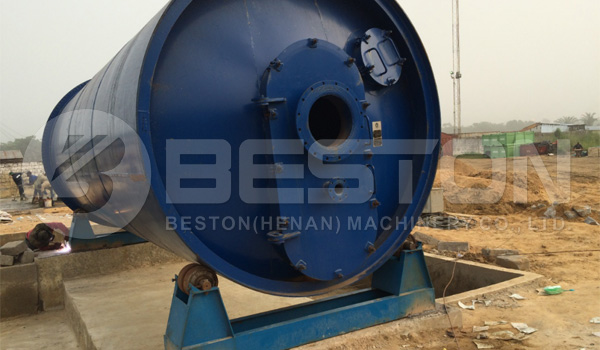Oil sludge is produced through drilling, refining, and exploration of different oil resources. It is made up of sludge, water, and oil, which can increase environmental pollution when not processed properly. Oil sludge is also a valuable resource that provides an opportunity to produce an income. This is the reason why many manufacturers are now investing in the oil sludge pyrolysis plant.
Since unprocessed sludge poses a danger when it comes to the surrounding environment, oil sludge treatment (planta de tratamiento de lodos de aceite) is one of the top investments for non-governmental, governmental, and private organizations. These treatment plants not only generate a valuable source of fuel oil but is also an excellent way to reduce the risks linked to oil-sludge pollution.

Options available with the Oil Sludge Pyrolysis Plant:
- – Oil sludge treatment plants include an automatic feeding-system that uses a direct condensation method that cools the gas into a liquid. All the exhaust gas and wastewater are processed by a special machine, which avoids polluting the surrounding environment.
- – The oil-sludge recycling plant features a pressure gauge and an automated warning device which ensures that the plant is safe to use and will alert the operator if something goes wrong.
How Does A Pyrolysis Plant Help To Treat Oil Sludge?
Before the invention of the oil sludge treatment plants, it was once a complicated process to treat oil sludge. Oil sludge is the by-product of oil refinery and drilling and is made up of a combination of oil and water. The pyrolysis plant (planta de pirólisis de caucho residual) for oil sludge separates the oil from the water, turning the oil into a usable product. The oils sludge pyrolysis plant includes an oil condenser, pyrolysis reactor, hydro-seal, de-casting system, and an oil tank.

The Design Of The Oil Sludge Pyrolysis Plant:
- The main components involved in exhaust gas that cannot be liquefied, include the alkanes class C1 to C4. The direct burning of these alkanes poses many risks. The pyrolysis plant (planta de pirólisis de aceite) features a design whereby the gas first passes through a water-seal. The gas is then trapped in the first seal before it is used as fuel for the gas burner, which is contained inside a safety device.
- These systems also include a hydro-seal which stops the flame from burning back, while removing impurities, sulfur and cleans the desulfurization gas.
- These devices also come with built-in operating technology to manage any bugs during the process of production. It also includes a pressure gauge and thermometer to monitor pressure and temperature.
- It also used a third-generation heating method that combines excellent advantages of both indirect and direct heating to ensure a safer operation.
Final Thoughts
The oil sludge pyrolysis plants are available in 3 types, including the fully-automatic oil sludge pyrolysis plant (planta de pirólisis completamente automática), semi-automatic oil sludge plant, and the batch oil sludge pyrolysis plant. The plant that matches up to your requirements will be determined by the volume of oil sludge that you wish to process. Crude oil sludge pyrolysis plants have become an attractive investment opportunity for many businesses that deal with this type of waste.